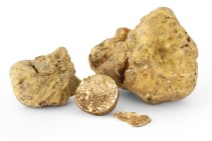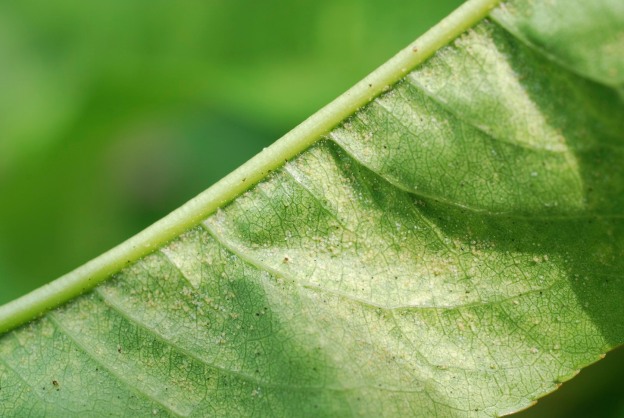Growing Asparagus –
The asparagus plant is grown as a perennial vegetable in the UK and can yield for 15 years, it is essential to get the planting and preparation right.
The plant is composed of ferns, crown and a root system.
The crown is a collection of rhizomes and lateral roots that initiate new ferns.
Spears, which are the harvested portion of the asparagus plant, are immature ferns. Thus, if the spear is not harvested, it develops into a large fern, which manufactures and stores energy in the crown for next year’s crop.
Asparagus is a dioecious plant, which means that there are separate male and female plants. Male asparagus plants produce more spears than female plants do which is why they are planted commercially. Female asparagus plants produce numerous bright, red, berrylike fruits with seeds that can become volunteer weeds in the garden or field.
Preparing the asparagus bed is important, attention should be given to choosing the best planting site possible. Like most vegetables, asparagus will not tolerate wet, soggy soil.
Choose a well-drained field, or use raised beds to promote drainage.
Asparagus will perform best on sandy, light-textured soils. The crowns should be planted in the spring as early as the soil in the garden can be worked.
Late March or early April is a good time in most areas, do not be tempted to plant earlier than the weather permits, wait until the soil warms up.
Separate crowns by size and plant similar-sized crowns together; this encourages uniform growth. If crowns cannot be planted immediately, store them in a refrigerator.
Planting;
Make a 8-inch-deep furrow using a garden hoe or spade, well rotted manure can be spread in the furrow. This is covered with an inch of soil, and the crowns are spaced 12 inches apart in the furrow on a slight ridge , this will put the crown 6 inches below soil level. Beware of shallow planting as this will give you lots of thin spears -plant too deep and you will get very fat spears but not many of them.
Each row should be no less than 3 feet apart and ideally set at 5ft, so the ferns can close the canopy and shade weeds out during the summer. If rows are spaced too close together, spear size may be reduced.
Cover the crowns with about 2 inches of soil, and as the ferns emerge and grow, gradually fill in the furrow through the summer.
Plants that are stressed by drought can become weak and susceptible to insect, disease and weed pressure. Gardeners and growers should be prepared to irrigate new asparagus plantings for the first two or three seasons after establishment. Drought stress after harvest can reduce yields for the following season.
Weed control is the most challenging aspect for successful asparagus production. Organic mulches such as straw or compost can be applied 4 to 6 inches thick to suppress weeds or growing a green manure in the path can help. Use of a hoe is not recommended for obvious reasons. Salt has long been used as a weed suppressant and some still like this method, however , it can cause long term problems with the soil structure and where rain washes out he salt into surrounding areas.
Diseases;
Selecting a site with good drainage and optimal pH (6.2 -6.8 ) will prevent many asparagus diseases. Crown rot, a potentially devastating disease, can be caused by over harvesting, growing in acidic and waterlogged soils, and excessive pest problems.
Cercospora needle blight is often seen as reddish brown, elliptical lesions on the ferns. These lesions are followed by death of the foliage.
The yield of asparagus spears in the spring is directly related to the previous year’s fern growth. Asparagus can be harvested for a limited time (two weeks) the second year after planting crowns (three years from seed transplants). Over harvesting one year can weaken the plant and decrease yields the following year. Three years after planting the crowns, asparagus can be harvested for five to eight weeks. Each year, during the first several years of production, yields will increase if the planting is managed properly.
Average yields 2.5kg per 100 square feet. (On commercial plantations locally we have achieved 6.5- 8 tonnes per hectare)
Asparagus spears are best harvested by cutting them off with a knife near ground level. Most people prefer to snap the asparagus spears when they reach 7 to 9 inches in length in cool weather (less than 70 degrees F), and the spear tip is tight or 5 to 7 inches in warmer weather (more than 70 degrees). Cutting will break the spear cleanly at a tender point.
To preserve freshness, harvest during the morning or evening. Expect to harvest every one to three days as temperatures increase. Spring freezes will not harm the crowns or subsequent harvests but can damage emerging spears. Thus, emerged spears may be harvested before a predicted freeze.
Asparagus has a short shelf life and may be plunged in cold water after harvest and immediately refrigerated (36 degrees F) to maintain quality.
After harvest, the asparagus planting should be fertilized with composted manure or a compound fertiliser to stimulate summer and autumn fern growth. Frost will desiccate the ferns, and they can then be cut in late autumn or early winter, removing all the old ferns and destroying them will help prevent disease build up. We mulch the crowns to protect them from low-temperature injury. The mulch can be raked to the row middles the following spring (early April), and spears will emerge for another harvest season.
Asparagus contains high levels of vitamin A, folic acid and dietary fibre, it is also rich in soluble fibre, known to have a protective effect against degenerative heart diseases. Asparagus also contains high levels of potassium and a high folic acid content . Asparagus is also low in fat and sodium.It is also a source of iron.
There are many cultivars to choose from with attributes relating to season and size of spear and colour. Flavours also differ, modern commercial cultivars will yield better and with higher quality than many older choices.








